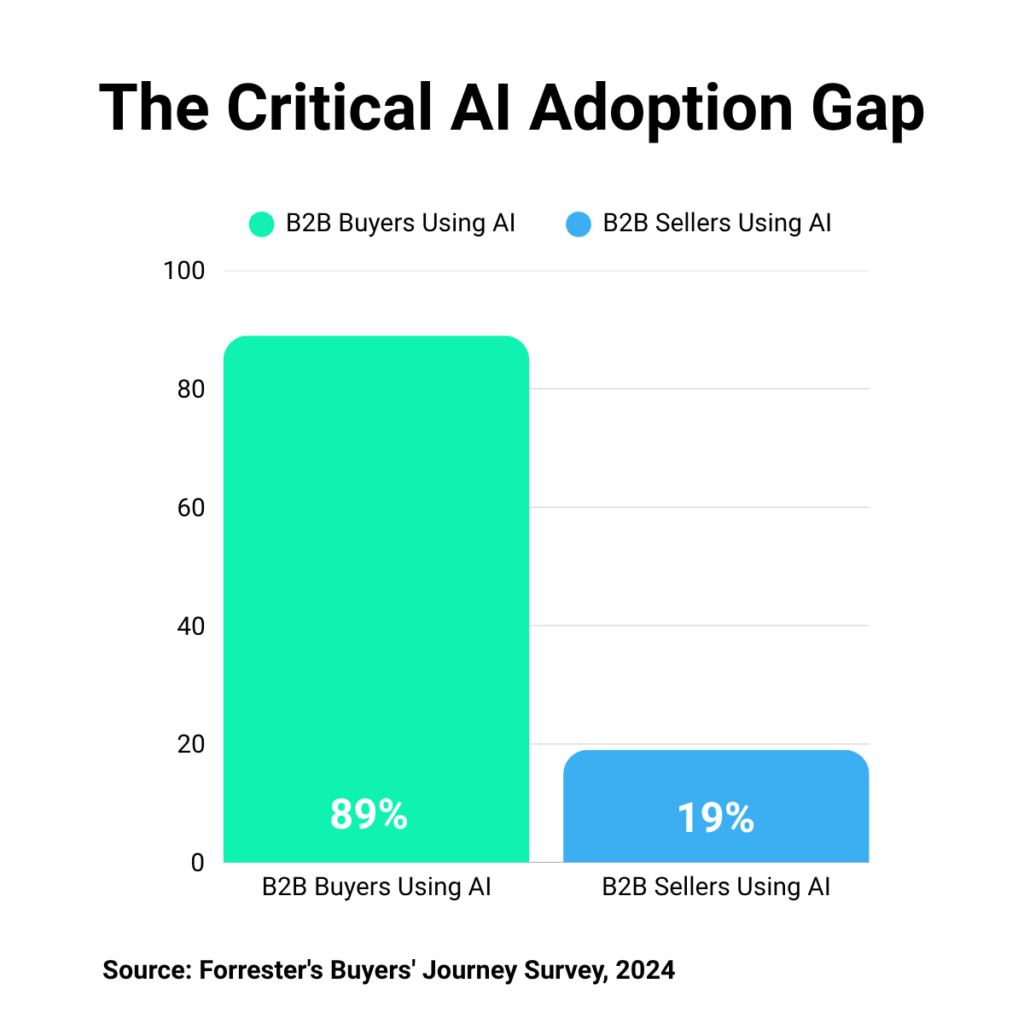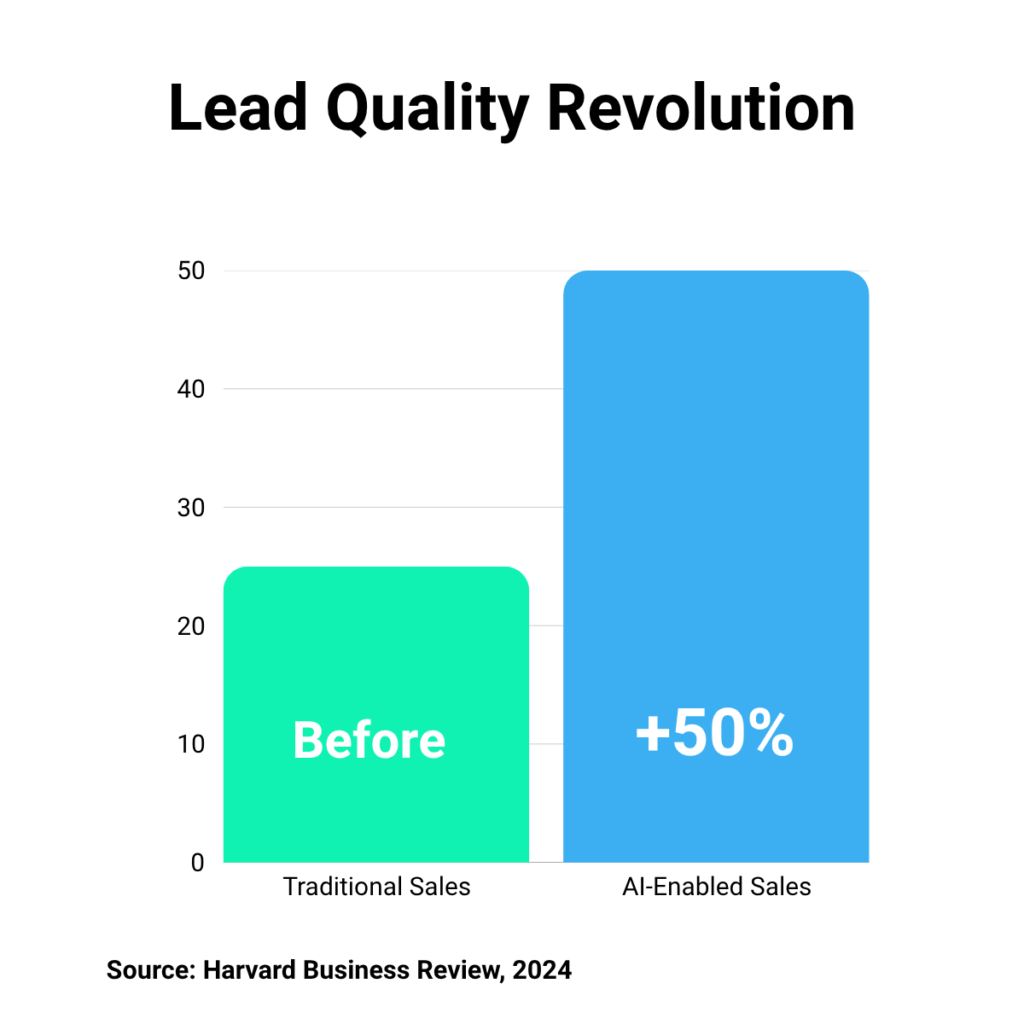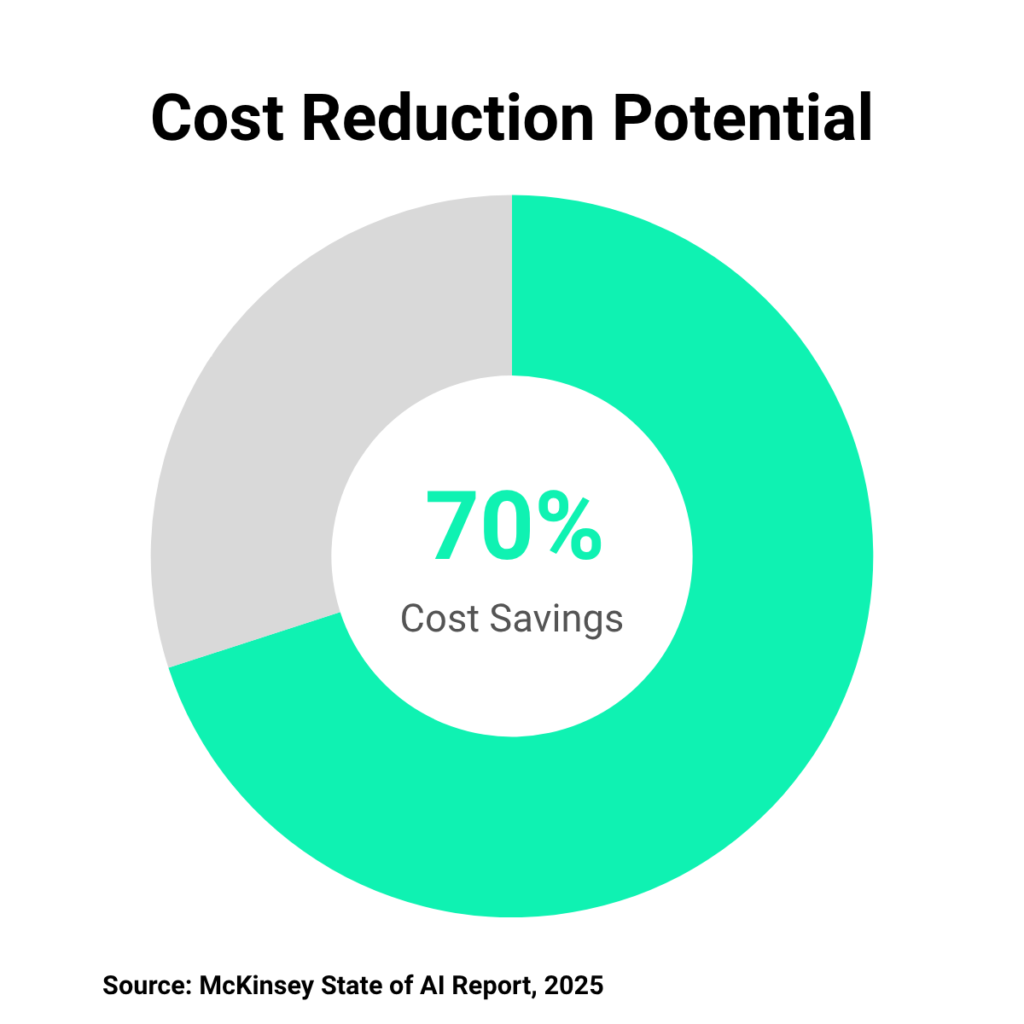The AI revolution in B2B sales has reached a critical inflection point. In this relentless arena, a rare and finite window for competitive arbitrage has opened-the art of capitalizing on a new opportunity to generate substantial profits before the market becomes saturated and competitors compress those initial high margins.
While AI adoption is accelerating, a significant opportunity remains for forward-thinking companies to establish a decisive first-mover advantage.
This creates a critical question for every C-suite executive: Is your sales organization positioned to capture this advantage, or will you be relegated to playing catch-up in a market fundamentally redefined by AI agents?
The urgency to act is palpable. AI-driven BDRs are rapidly transitioning from a niche innovation to a foundational element of high-performing B2B sales teams. The next 24 to 36 months represent a critical period to build a significant, defensible lead. Industry forecasts indicate that by 2026-2027, the integration of AI into sales processes will be the norm, not the exception, effectively signaling the end of this specific arbitrage opportunity for AI BDR Agents. The imperative is not merely about adopting a new technology; it is about capitalizing on a temporary market inefficiency.
The substantial value derived from being an early mover-in terms of efficiency, market share, and learning-diminishes significantly once the broader market reaches an adoption equilibrium. At that juncture, AI BDRs will shift from a competitive differentiator to a cost of doing business, and the outsized returns available today will have vanished.
AI Adoption Trends: A Tidal Wave in Motion
The momentum behind AI is undeniable. McKinsey’s 2025 State of AI report shows that 42% of organizations are now actively using generative AI in their marketing and sales functions. This trend is further highlighted by Gartner, which identifies the emergence of AI agents – autonomous programs capable of making rational decisions without direct user input-as a transformative force for improving efficiency in lead generation, forecasting, and pipeline management.
Perhaps most critically, however, Forrester data from early 2025 reveals a stark dichotomy: while an overwhelming 89% of B2B buyers are utilizing generative AI throughout their purchasing process, a mere 19% of B2B organizations are using it in production within their sales functions.
This significant gap between buyer behavior and seller capability represents the immediate arbitrage opportunity. Buyers are increasingly AI-receptive, yet the majority of sellers are not equipped to meet these evolving expectations. This disparity signals that the market is at an inflection point, and companies that move swiftly to bridge this gap will offer a superior, more aligned buying experience, thereby capturing attention and market share from slower-moving incumbents.

Quantifiable Impact – The ROI Proof: Beyond Hype, Measurable Results
The case for AI-powered BDRs extends far beyond theoretical advantages; it is firmly rooted in measurable, real-world results. Organizations that have embraced these technologies are reporting significant improvements across key sales metrics, demonstrating compelling ROI across multiple dimensions:
- Lead Generation & Meeting Setting: AI sales tools can increase leads and meetings by over 50%. A Harvard Business Review study also noted a 50% increase in sales-qualified leads through AI adoption.

- Cost Reduction: Significant cost efficiencies are achievable, with McKinsey reporting potential reductions in call times by 60-70% and overall sales-related costs by up to 60%. Furthermore, unified AI platforms can drive operational cost reductions of up to 70%.

- Productivity & Efficiency: Gartner predicts that by 2026, generative AI will reduce the time B2B sales organizations spend on prospecting and meeting preparation by over 50%. Sales teams often spend up to 65% of their time on non-selling activities; unified AI platforms have the potential to reduce this administrative overhead by up to 90%. Supporting this, 73% of salespeople using AI-powered CRMs state these tools have significantly boosted their team’s productivity, and AI BDR Agents built with n8n + GPT-4o can automate as much as 80% of traditional BDR tasks.
- Revenue Impact: The bottom-line impact is clear. McKinsey reports an ROI uplift of 10-20% and a direct revenue increase of up to 15% for companies investing in AI for sales. Moreover, over 80% of sales teams currently using AI have reported increased revenue.
First-Mover Learning Curve: The Unseen Compounding Benefit
The advantages of early AI BDR adoption extend beyond immediate operational efficiencies. Crucially, early adopters embark on an invaluable learning journey that compounds over time. This journey involves:
- Integrating AI into existing workflows and technology stacks: Seamlessly connecting AI BDR Agents with CRMs (like Salesforce or HubSpot), sales engagement platforms, and other business systems is a non-trivial task that yields critical operational knowledge.
- Refining AI BDR Agents configurations: Iteratively improving prompts for generative AI, fine-tuning sales playbooks for AI execution, and honing Ideal Customer Profile (ICP) definitions based on real-world performance data and feedback.
- Upskilling sales teams: Training human BDRs and account executives to collaborate effectively with AI agents, shifting their focus from routine tasks to higher-value activities such as strategic relationship building, complex negotiations, and closing deals. This includes developing AI literacy across the sales organization. Notably, two-thirds of BDRs surveyed are eager to adopt AI-driven tools.
This early and continuous engagement fosters what Gartner terms a cumulative learning effect. Unified AI platforms, in particular, become more intelligent and effective over time as they process more data and interactions. This accumulated wisdom is difficult for latecomers to replicate quickly. The knowledge, refined processes, and optimized AI models built during this early adoption phase transform into a proprietary organizational asset. This embedded operational expertise forms a deeper and more sustainable competitive moat than the initial technological advantage itself. While laggards can eventually purchase similar tools, they cannot instantly acquire the years of iterative learning and process optimization that early movers will have already banked.
Understanding this learning advantage is crucial, but recognizing the implementation challenge is equally important.
The Implementation Reality: Why Execution Separates Winners from Wishful Thinkers
The market opportunity is clear, but the execution challenge is real. Most B2B companies struggle to bridge the gap between AI potential and practical deployment. Generic AI tools promise transformation but deliver generic results. Off-the-shelf solutions lack the nuanced understanding of your specific market dynamics, buyer personas, and competitive landscape that drive actual conversions. The companies capturing the real arbitrage aren’t just adopting AI-they’re deploying custom-engineered systems that integrate seamlessly with their existing sales operations while delivering measurable results from day one.
The Path Forward: From Market Observer to Market Leader
This is your inflection point. The companies that will dominate the next phase of B2B sales aren’t waiting for perfect solutions-they’re building competitive advantages today. At Ronen Horen AI Team, we are helping B2B companies deploy custom AI BDR systems that deliver measurable results within weeks, not months. Our approach goes beyond generic tools to create precision-engineered sales engines tailored to your specific market and customer profiles.
Ready to explore how your organization can capture this AI BDR arbitrage? Let’s discuss your specific situation and map out a strategic advantage that your competitors can’t simply purchase later.
About the author
Ronen Horen is an AI transformation leader and former Google Israel founding member who has engineered 50+ AI assistants delivering 10X productivity gains for B2B sales and marketing teams.
